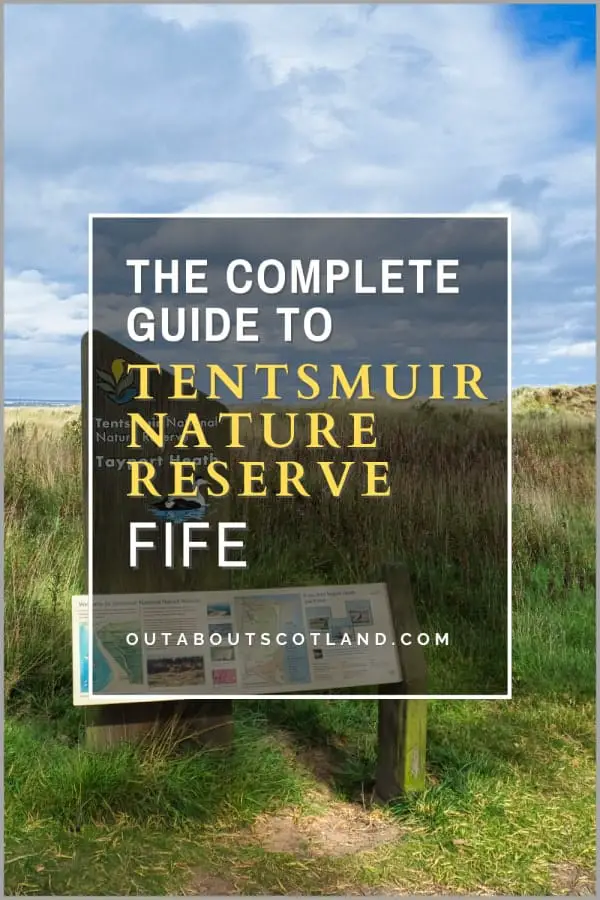St. Andrews Castle in Fife is a stunning reminder of the turbulent history of Scotland. This iconic castle was built in the 12th century and served as a residence for the bishops and archbishops of St. Andrews for hundreds of years, witnessing numerous sieges, battles, and political upheavals.
In this article, we’ll delve into the rich history of St Andrews Castle and explore the many wonders that await visitors to this ancient stronghold.
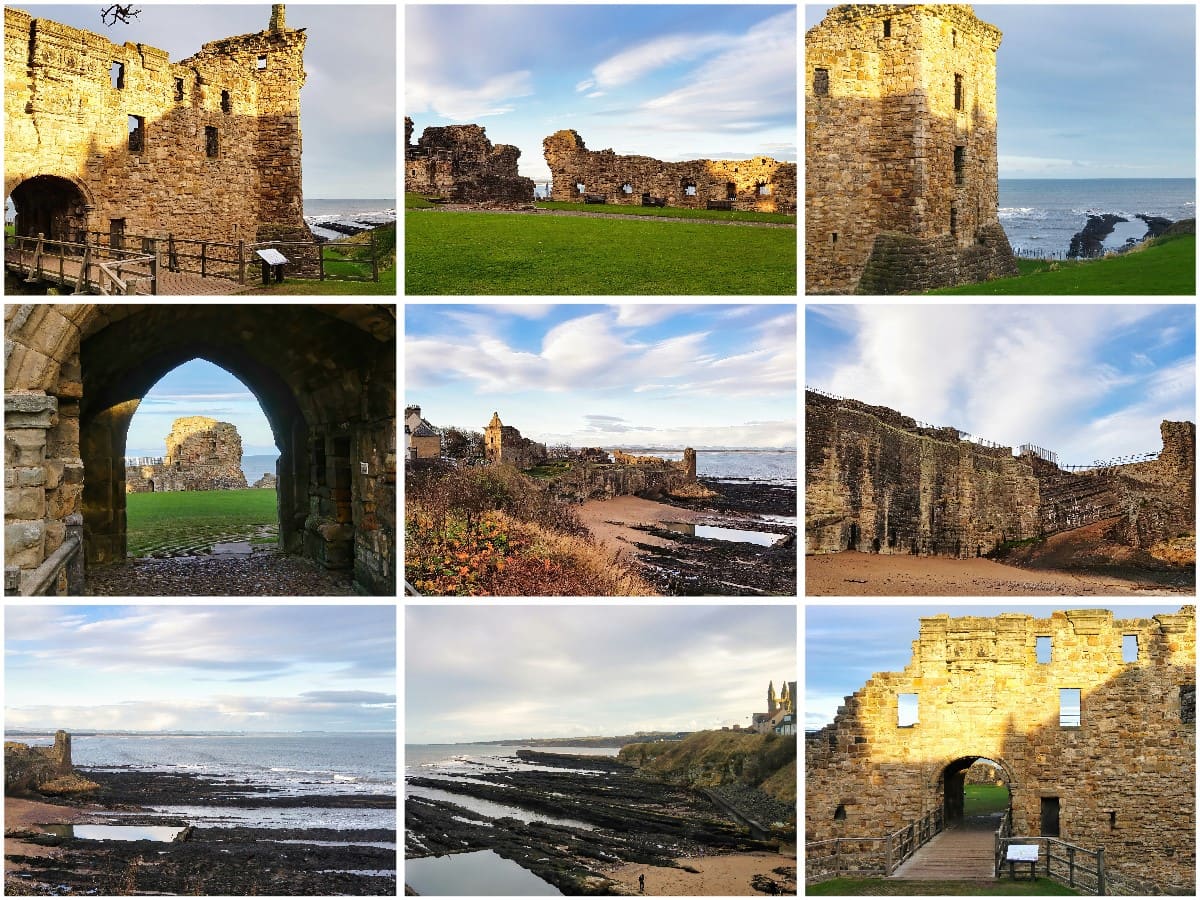
| Address: | The Scores, St. Andrews, Fife, KY16 9AR |
| Opening Hours: | 1 Apr to 30 Sept: Daily 9.30 am to 5.30 pm. Last entry 4.45 pm. 1 Oct to 31 Mar: Daily 10 am to 4 pm. Last entry 3.30 pm. |
| Admission Price: | Adult (16-64): £9.50 Concession (65+ and unemployed): £7.50 Child (5-15): £5.50 Family (1 adult, 2 children): £19.00 Family (2 adults, 2 children): £27.50 Family (2 adults, 3 children): £32.50 |
| Parking: | Single disabled parking space outside the castle. Parking is available on the streets nearby but the closest car park is a half mile away at the Bruce Embankment. Drop-offs at the castle are allowed for visitors. |
| Contact: | Telephone: 01334 477 196 |
| Facilities: | Disabled toilets and standard toilets, visitor centre with information displays, shop. |
Overview
The pretty coastal town of St. Andrews in Fife is one of southeast Scotland’s most-visited tourist destinations, for two reasons. First, there’s the iconic Old Course on the northern end of the town, which is the oldest golf course in the world and is considered by many to be the true home of golf.
The sport has been played on the Old Course since at least the 15th century and it regularly hosts The Open Championship which is the oldest of golf’s major championship events.
Second, the town is home to the medieval St Andrews Cathedral – the largest church in Scotland at the time it was built which is dominated by the 108-foot St. Rules Tower that looms over the ruins of what was once the headquarters of the Scottish Church.
The bishops who oversaw the administration of the cathedral were some of the most powerful men in Scotland, and accordingly, they needed a safe refuge to live in, hence the reason why a castle was built a few hundred feet to the north on top of cliffs overlooking St. Andrews Bay.
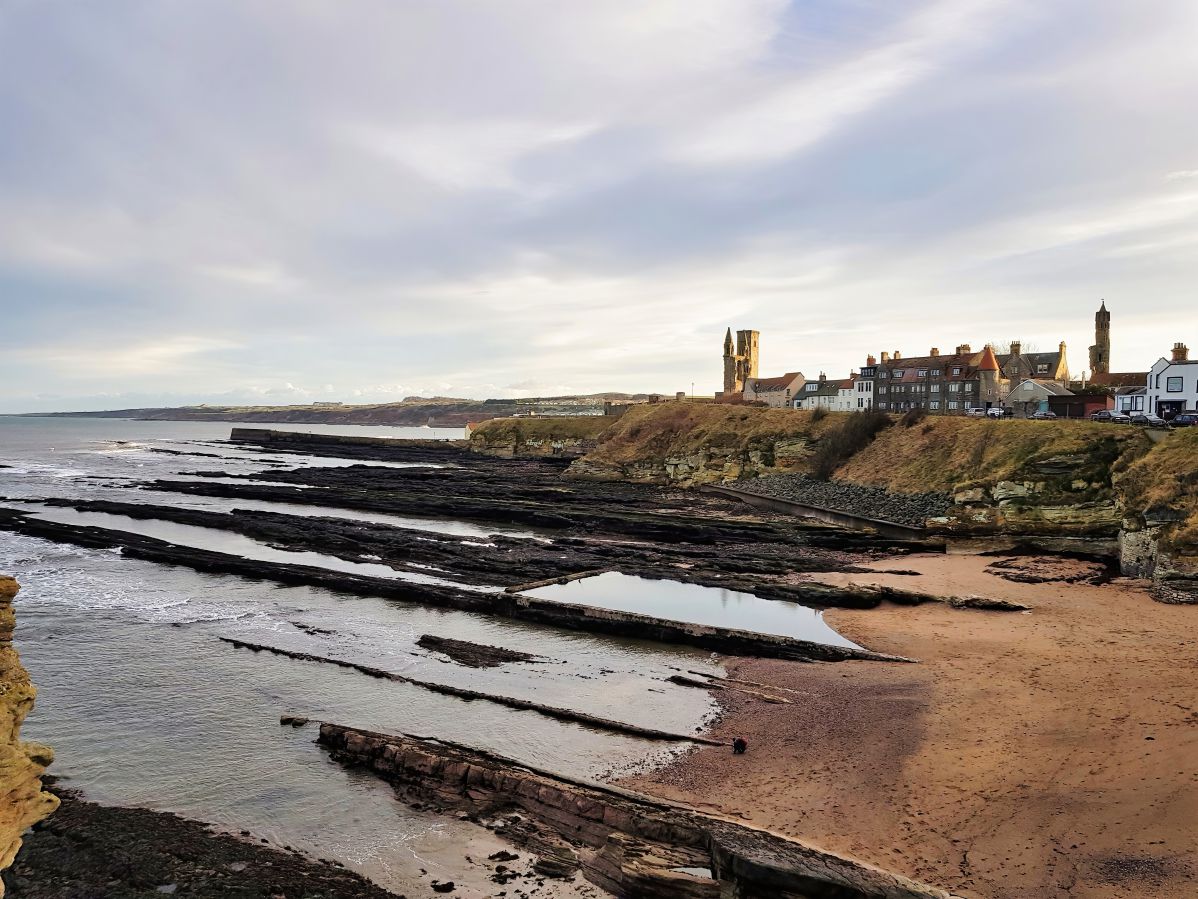
St. Andrews Castle was used by the church from the 1100s until 1592 when it was abandoned following the abolition of bishops in Scotland, after which it rapidly fell into ruin and partially collapsed, leaving behind the remains of the outer walls and the castle entrance.
It’s now managed by Historic Environment Scotland, which maintains the remaining buildings as well as a visitor centre that aims to show what life would have been like for the residents of St. Andrews Castle in its heyday. While the cathedral is the main draw for tourists, the castle is equally important historically and is well worth a visit for anyone on a sightseeing tour of the town.
To get there from the cathedral entrance, follow Gregory Lane towards the shoreline and turn left. The walk to the castle is only around 700 feet, so it shouldn’t take more than a few minutes, or alternatively, you might be lucky enough to find a parking space on The Scores Road outside the castle entrance.
As this is a major HES site it has paid entry (but concessions are available) so I recommend becoming a member as admission is free for a year and you’ll save a fortune if you intend to visit more historic sites in Scotland.
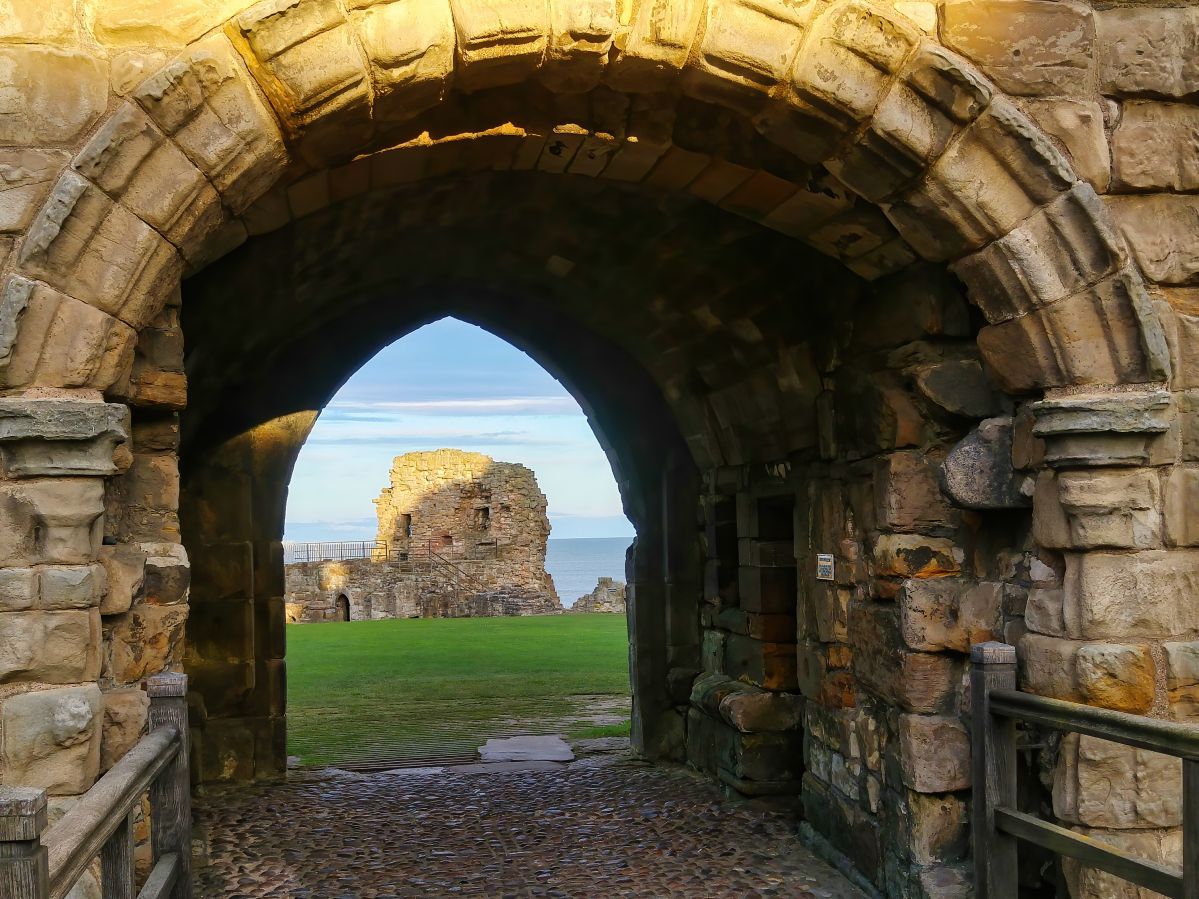
The Highlights
1: St. Andrews Castle is a must-visit destination in the town, especially for anyone with an interest in history. As the original stronghold of the bishops of St. Andrews, this ruined fortress has a fascinating story to tell that spans hundreds of years and is explained through a series of informative displays in the on-site visitor centre.
2: The castle is located in a particularly scenic area overlooking St. Andrews Bay and the enormous West Sands Beach. It’s also within easy reach of other attractions including St. Andrews Aquarium and St. Andrews Cathedral.
3: Visitors can head down the steps to Castle Sands which is a small pebble beach at the foot of the castle. The beach offers a great alternate view of the fortress and it’s a good place for children to look around for rock pools left behind by the retreating tide.
Visiting Tips
1: Although family tickets are a wee bit expensive you can save a packet on this and other historic sites by becoming a member of Historic Environment Scotland. Membership gives unlimited free entry to all their sites including top attractions like Edinburgh and Stirling castles.
2: If you have children eager to burn off energy after a visit to the castle I highly recommend taking a 10-minute walk to West Sands Beach where you can stroll for nearly 2 miles either along the tarmac path of West Sands Road or on the beach itself.
3: If you want to drive to the castle you’ll be able to park on The Scores road, but get there early because the spaces fill quickly. If you can’t find a spot outside the castle keep driving to the aquarium which has more parking spaces on the road in front of it.

Tourist Information
Tickets purchased, you’ll first enter the visitor centre which has a number of interesting information displays that explain how and why the castle and cathedral were built along with facts about St Andrews Castle history, after which you can enter the ruins via a reinforced grass path that crosses a wooden bridge to the main courtyard.
You can see most of the castle from the courtyard but there are two floors in the south range that are only accessible via a spiral stone staircase, so bear that in mind if you have anyone with impaired mobility with you.
Although the majority of the castle has crumbled away you’ll still get a good idea of how big it must have been back in the day, but to really get an understanding of the structure you can take a handheld audio guide with you as you walk around which explains what each part of the castle was used for.
It’s not the largest castle in Scotland, admittedly, but it’ll take at least half an hour to explore the upper section after which you can descend the steep steps into the castle’s highlight – the subterranean mine and countermine.
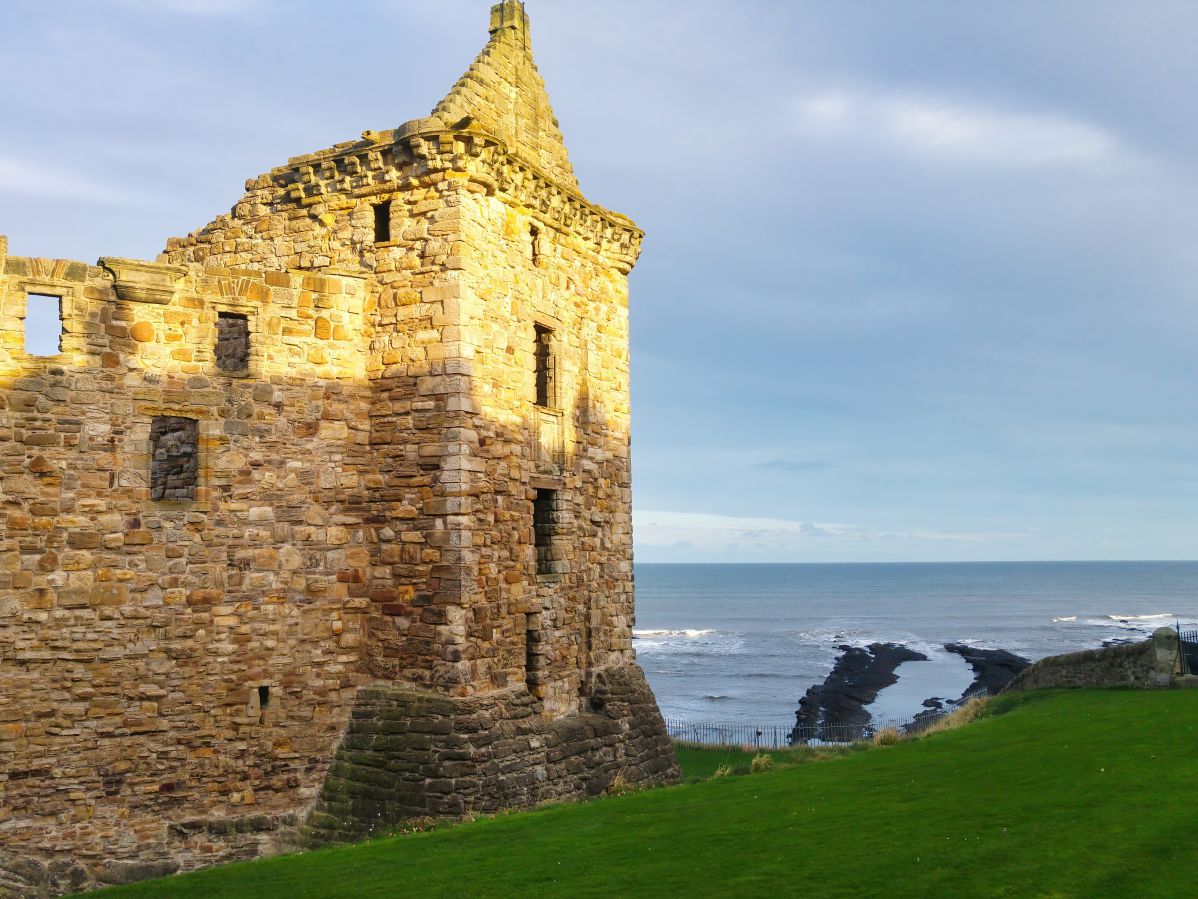
These mines were dug through solid rock during a siege in 1546, first by attackers and then by the castle’s counter-attackers. The mines were forgotten about following the abandonment of the castle and weren’t rediscovered till the late 1800s, and the St Andrews Castle mines are now amongst the best-preserved siege mines in Europe.
The final point of interest is the infamous St Andrews castle dungeon, also known as the ‘bottle dungeon’, so namedbecause it was dug out of the rock to be shaped like a bottle with a thin neck at the top and a bulbous bottom, which would have made escape impossible. It’s now covered over with an iron grate, so there’s no chance of falling in (thankfully), but it’s a fascinating example of early Scottish engineering.
Note that due to the crumbling walls of this castle, it’s occasionally closed to the public, so you might like to check the Historic Environment Scotland closures page before leaving home to see if it’s open on the day of travel.
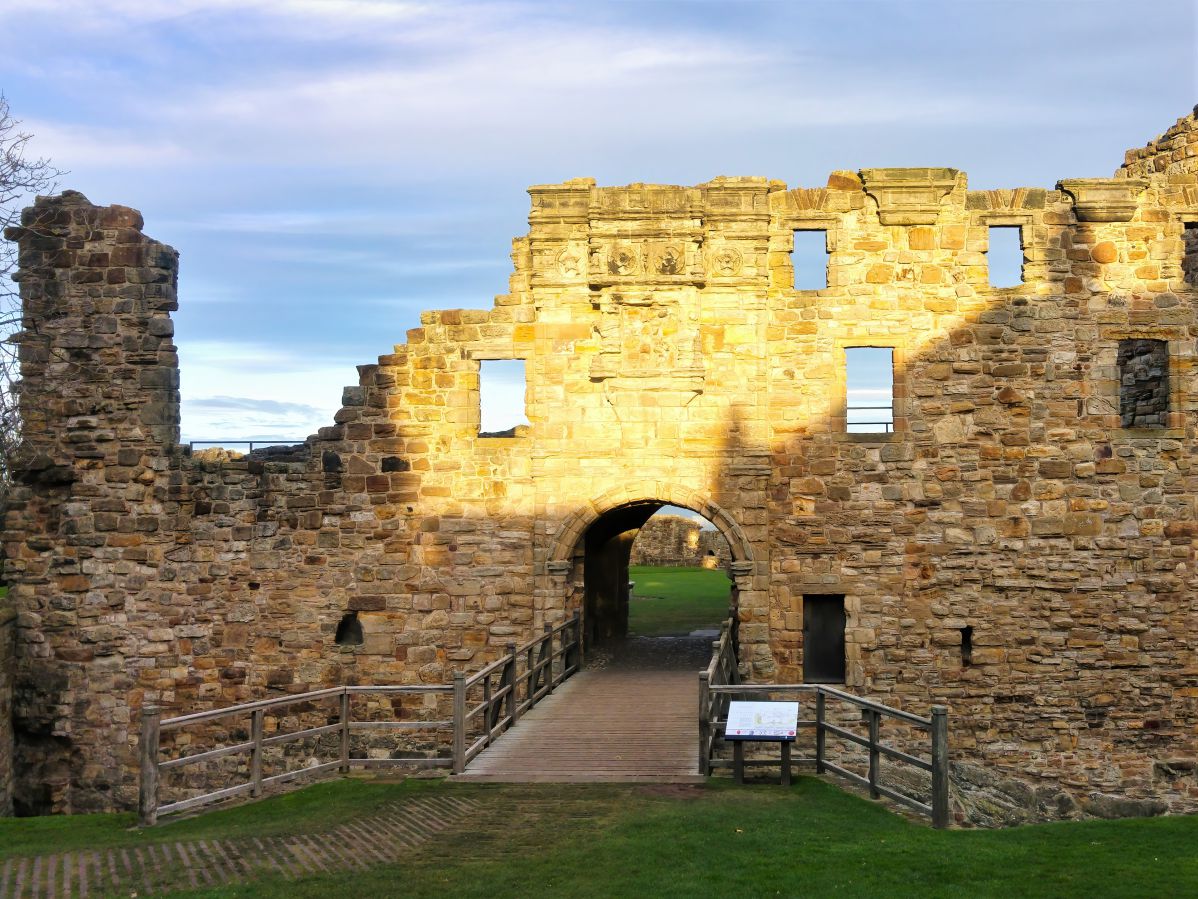
Things to Do
Exploring the Ruins: The castle ruins offer a unique opportunity to glimpse into Scotland’s past thanks to information boards that describe the history of the site, from political intrigues to Scotland’s religious reformation.
The Bottle Dungeon: One of the most chilling yet fascinating parts of the castle is undoubtedly the Bottle Dungeon. This is a notorious prison where several important religious figures were held which has a unique shape and a gruesome history that makes it a must-visit for any history enthusiast.
The Siege Tunnels: Experience the thrill of walking through the same underground tunnels that were used during the siege of the castle in the 16th century. The siege tunnels offer a unique perspective on the castle’s turbulent history and the innovative warfare tactics of the time.
The Sea Views: St Andrews Castle is perched on a cliff overlooking the North Sea where you’ll be able to enjoy lovely views of the rugged coastline in this part of Scotland.
The Visitor Centre: Start your visit at the Visitor Centre to learn more about the castle’s history before you explore the ruins. The Visitor Centre houses fascinating exhibits and provides informative audio guides to enhance your understanding of this important historical site.
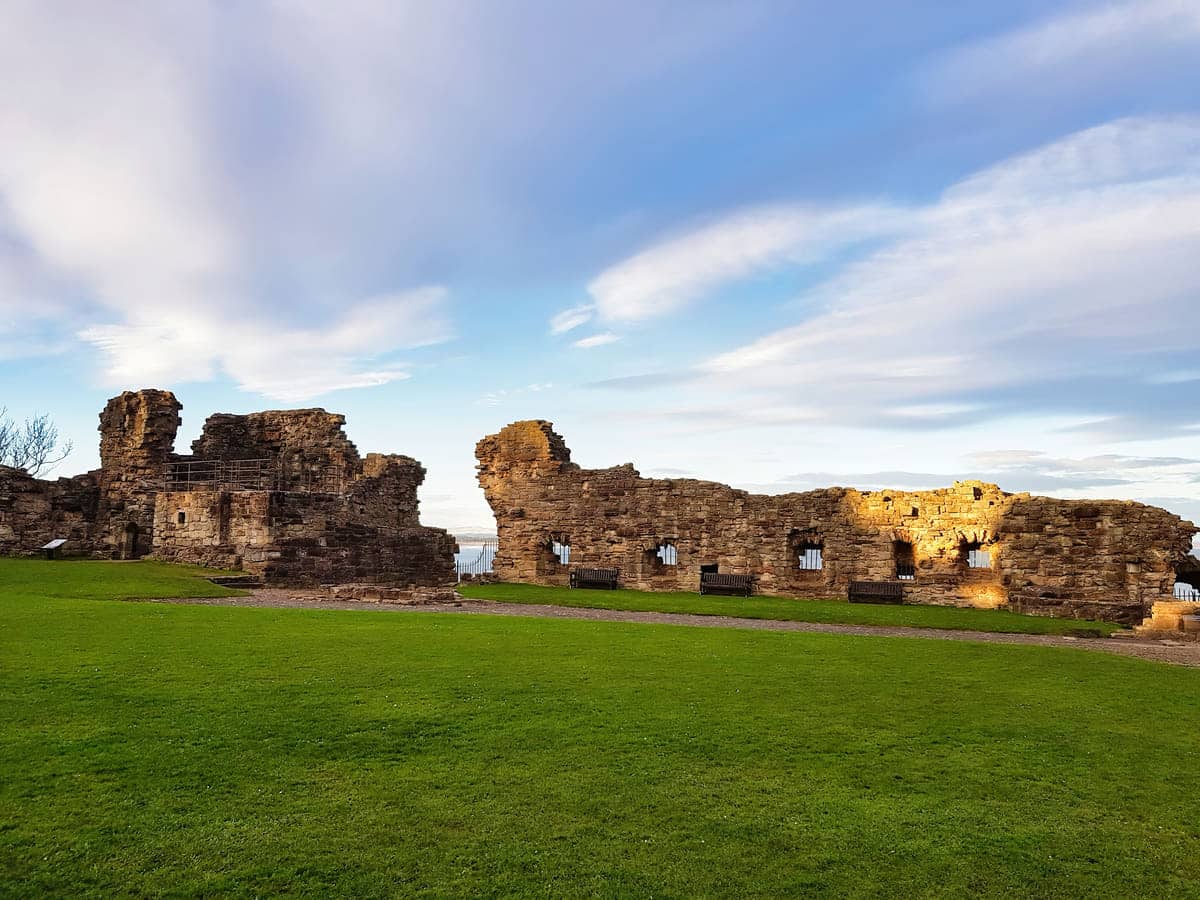
Things to Do Nearby
St. Andrews Cathedral. The Pends, St Andrews KY16 9QL. 4-minute walk.
This was Scotland’s largest church in the 1500s and the site has been used for worship for at least 1,300 years. Much of the cathedral is in ruin but there is a 108-foot (33-metre) central tower (St. Rule’s Tower) that allows visitors to climb to the top for spectacular views across the town.
St. Andrews Aquarium. The Scores, St. Andrews, KY16 9AS. 8-minute walk.
An aquarium that faces the North Sea near West Sands Beach. The aquarium has a variety of enclosures on display that house more than 100 different species of fish, as well as sharks, seals, and penguins.
St. Andrews Links, W Sands Rd.., St.. Andrews, KY16 9XL. 12-minute walk.
St. Andrews is the world’s oldest golf course and was founded in the early 15th century. It is possible to walk along the side of the course via West Sands Road. The clubhouse has a snack bar and a café.
West Sands Beach. W Sands Rd.., St Andrews, KY16 9XL. 11-minute walk.
An exceptionally large beach that’s backed by the the St. Andrews Links golf course. The beach juts out into the area where the River Eden flows into the North Sea at Out Head. Car parking and public toilets are located close to the beach.
St. Andrews Botanic Garden. Canongate, St Andrews KY16 8RT. 21-minute walk.
A large botanic garden and greenhouses that cover 18 acres in the heart of St. Andrews. There are more than 8,000 plant species to view, many of which are exotics that are rarely seen in Scotland. There are also woodland walks, a play area, and a gift shop.
Frequently Asked Questions
What is St. Andrews Castle famous for?
St. Andrews Castle is a landmark of historical significance in St. Andrews, Scotland. The castle was constructed in the 12th century and has a lengthy and turbulent past, having been the scene of several conflicts and sieges over the years.
During the Scottish Reformation, it served as a jail for Protestant reformers, but now, tourists can explore the castle remains and learn about its fascinating history.
What happened to St. Andrews Castle?
St. Andrews Castle is a ruin in the town of St. Andrews in Fife, Scotland. It was once a magnificent structure but it suffered significant damage during the Wars of Scottish Independence (1296-1356).
Though it was repaired in the mid-1500s it was abandoned and left to fall into ruin after bishops were abolished in 1592.
Why was St. Andrews Castle built?
St. Andrews Castle is located in St. Andrews in Fife, 1,000 feet north of St. Andrews Cathedral. It was built as the residence of the bishops of St. Andrews who were among the most powerful figures in medieval Scotland.
Is St. Andrews in Scotland worth visiting?
St. Andrews is a beautiful and historic town located on the east coast of Scotland. It is known for its famous university, scenic beaches, and, of course, the iconic Old Course golf course.
Visitors can explore the ruins of St. Andrews Cathedral and St. Andrews Castle, both of which offer a fascinating glimpse into Scotland’s rich history, while hikers can take a walk along the Fife Coastal Path, which offers breathtaking views of the coastline.




